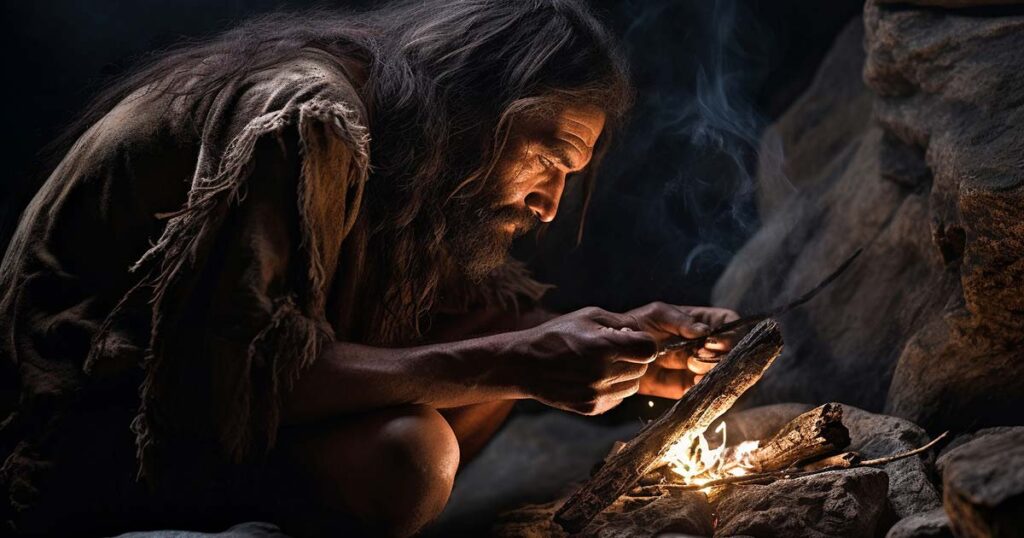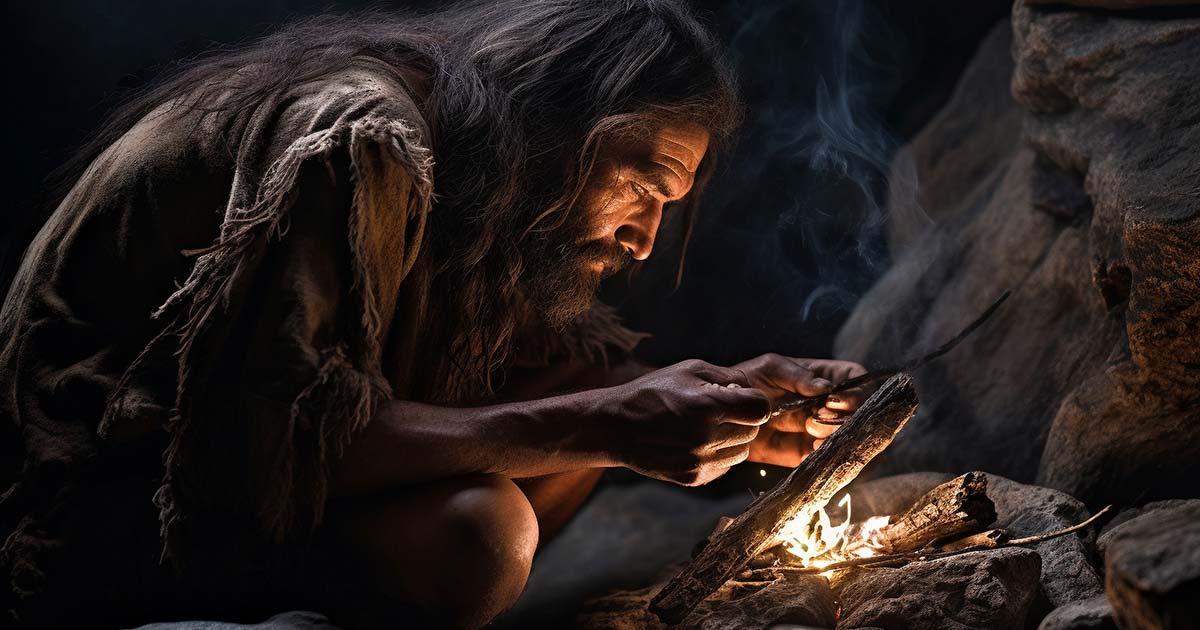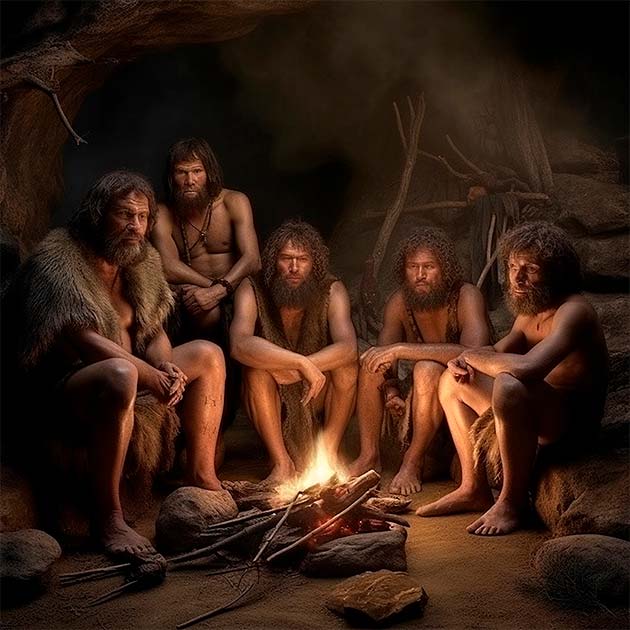

Neanderthals have been recognized as a species distinct from modern humans for quite some time. But if a trio of researchers from universities in Portugal, Italy and Spain get their way, this designation may soon change. These archaeologists believe Neanderthals were not a different species at all but instead were simply another variety of humans, a conclusion that they draw after completing an analysis of the ingenious way that Neanderthals used fire to satisfy their survival needs.

Excavation in the Gruta de Oliveira. (João Zilhão)
The Fire-Using Neanderthals of Gruta de Oliveira
In an article from the journal PLOS ONE, archaeologists Diego E. Angelucci from the University of Trento (Italy), Mariana Nabais from the Catalan Institute for Human Paleoecology and Social Evolution (Spain), and João Zilhão from the University of Lisbon detail their deep analysis of the fire-managing capacities of Neanderthal groups who lived in modern-day Portugal more than 70,000 years ago.
These particular Neanderthals found permanent shelter inside a large cave in central Portugal known as the Gruta de Oliveira, where they would not have been able to survive if they hadn’t known how to use fire for cooking, heating and light.
As the researchers discovered, the Neanderthals who occupied Gruta de Oliveira were true experts at fire management and manipulation, foreshadowing the knowledge displayed by modern humans who arrived in the region thousands of years later. It seems these humans followed the example set by the Neanderthals rather than the other way around, as they moved into caves and built fires to make them more conducive to long-term occupation.
“More than different species, I would speak of different human forms,” Angelucci, the lead of the groundbreaking PLOS ONE study, said in a University of Trento press release about his team’s research. The archaeologists drew this startling conclusion based on discoveries made over the course of more than two decades at Gruta de Oliveira, which was occupied first by archaic humans, then by Neanderthals and finally by modern humans from 120,000 to 40,000 years ago.

Neanderthal reconstruction. (Neanderthal Museum)
Neanderthals as Masters of the Ancient Life-Giving Fire
Portuguese archaeologists under the supervision of João Zilhão spent more than two decades, from 1989 to 2012, performing excavations inside Gruta de Oliveira, a Neanderthal hotspot that was occupied long before modern humans arrived in the Iberian Peninsula region. Their research revealed that the cave had been home to several generations of Neanderthals who lived between 93,000 and 71,000 years ago, during the latter stages of the Middle Paleolithic.
The Neanderthals of Gruta de Oliveira shared their cave home with several predator species, including lions, brown bears, lynxes and wolves, and like their four-legged roommates the Neanderthals also hunted other animals for food. But unlike these other predators, the Neanderthals built fires that they used to cook their food, just as humans did once they arrived in the region around 45,000 years ago.
Discoveries made during many different excavations disclosed valuable and fascinating information about how expertly and how frequently the Neanderthal cave dwellers managed fire. Among a wealth of stone tools and animal remains, the researchers unearthed bones that had been intentionally burned, in ways the clearly suggested they’d been roasted over extremely hot fires. The burn patterns were consistent, meaning the heating of the bones had occurred over controlled fires kept at steady temperatures suitable for cooking meat.
“We were able to find out what they ate and even the cooking techniques they used,” Angelucci said. “We found the remains and burnt bones of cooked goats, deer, horses, aurochs (extinct bulls), rhinos, turtles, which were probably laid on their carapace and stewed on hot stones.”
The Italian archaeologist noted that excavations in Neanderthal caves along the western Mediterranean have unearthed the scorched remains of fish, crabs and other types of seafood that were prepared in the same way as the meat was cooked in Gruta de Oliveira. This shows the Neanderthals customized their diet based on geographical location, although their methods of food preparation where shared in a way that suggests the existence of a unified ancient culture.

Excavation in the Gruta de Oliveira. (João Zilhão)
Fire Was a Way of Life for Neanderthals
Archaeologists excavating inside Gruta de Oliveira dug down about 20 feet (six meters) over an area that covered about 320 square feet (30 square meters) of cave floor. Proving the existence of intergenerational knowledge related to fire management, they discovered the remains of a dozen hearths distributed throughout multiple excavation levels. The hearths were identified by the presence of burned circular outlines that surrounded their filled-in basins.
“We found burnt bones, burnt wood and ash remains,” Angelucci said. “And the rock underneath has been reddened by the heat: this is a crucial detail because it tells us that the structure is in a primary position. And it has always been there.”
In addition to being used for cooking, these hearths would have functioned as central gathering areas, especially during the coldest, darkest months of winter when the heat and light from the fires would have been a vital source of warmth and illumination.
“Fire is a fundamental element in their daily lives,” Angelucci explained, using the present tense to help the reader or listener imagine what it would have been like to live inside a huge cave more than 70,000 years ago. “It makes the place comfortable and helps socialization. It gives back that basic idea of ‘home’ that perhaps could also apply to them.”
In this case, “them” refers to the Neanderthals, who pursued a lifestyle in prehistoric times that matched that of modern humans who came later. It is notable that Homo sapiens and Neanderthals lived side by side in Europe for several thousand years in apparent peace and harmony, even interbreeding in many instances to produce lasting changes in the genomes of both species (the genetic inheritance of humans of European descent contains about two percent Neanderthal DNA).

Could the Neanderthal ability to manage fire end up upgrading their categorization to being within the same species as modern humans? (Berit Kessler / Adobe Stock)
The Remarkable Truth about Neanderthals Now Revealed
The reputation of the Neanderthal has been steadily rehabilitated, to the point where they are now recognized as being close to humans in all capacities. It is now known that Neanderthals buried their dead and performed rituals to assure the safe passage of the deceased into the afterlife. They also created enduring artwork that decorates cave walls in Europe to this day.
Neanderthals made tools, jewelry and other items identical to those found at ancient human archaeological sites, showing cleverness and endless creativity. And as this new study has revealed, Neanderthals also started controlled fires and managed them just as efficiently as their human counterparts did in prehistoric times.
Taken as a whole, the evidence does not support a strict cultural and social separation between Homo sapiens and Neanderthals. The fact that they were biologically compatible and could breed with each other and produce offspring adds further strength to the assertion that the Neanderthals were really just another version of humans, with some unique traits but even more commonalities.